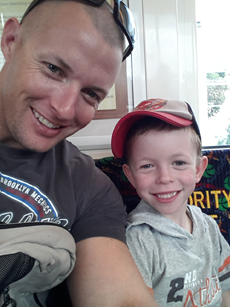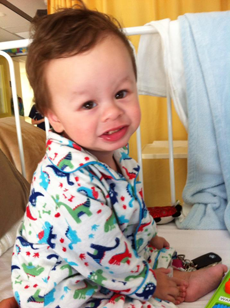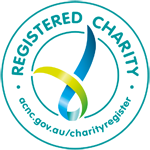




About Williams Syndrome
Williams Syndrome (WS) is a genetic condition that is present at birth and can affect anyone. It is characterized by medical problems, including cardiovascular disease, developmental delays, and learning disabilities. These occur side by side with striking verbal abilities, highly social personalities and an affinity for music.
WS affects 1 in 10,000 people worldwide. It is known to occur equally in both males and females and in every culture.
Unlike disorders that can make connecting with your child difficult, children with WS tend to be social, friendly and endearing. Parents often say the joy and perspective a child with WS brings into their lives had been unimaginable.
Common features of Williams Syndrome include:
Characteristic Facial Appearance
Most young children with Williams Syndrome are described as having similar facial features. These features include a small upturned nose, long philtrum (upper lip length), wide mouth, full lips, small chin, and puffiness around the eyes. Blue and green-eyed children with WS can have a prominent "starburst" or white lacy pattern on their iris. Facial features become more apparent with age.
Heart and Blood Vessel Problems
The majority of individuals with Williams Syndrome have some type of heart or blood vessel problem. Typically, there is narrowing in the aorta (producing supravalvular aortic stenosis SVAS), or narrowing in the pulmonary arteries. There is a broad range in the degree of narrowing, ranging from trivial to severe (requiring surgical correction of the defect). Since there is an increased risk for development of blood vessel narrowing or high blood pressure over time, periodic monitoring of cardiac status is necessary.
Anaesthetic Concerns
Children and adults with Williams Syndrome are regarded medically as being at high risk during anaesthesia. Williams Syndrome is a genetic disorder associated with cardiac pathology, including supravalvular aortic stenosis and coronary artery stenosis with a majority of individuals with Williams Syndrome having some type of heart or blood vessel problem. Sudden cardiac death has been reported during surgical procedures and attributed to cardiovascular pathology and the significant anaesthetic risk to patients with Williams Syndrome should be recognised and considered by clinicians planning procedures requiring general anaesthesia.
A detailed pre-operative assessment including cardiac evaluation, airway anatomy, metabolic function and cognitive status plays a crucial role for planning and executing safe anaesthetic interventions, regardless of the surgical procedure. Intensive monitoring during surgery and during the post-operative periods forms the basis for a successful anaesthetic outcome of Williams Syndromes patients.
Hypercalcemia (Elevated Blood Calcium Levels)
Some young children with Williams Syndrome have elevations in their blood calcium level. The true frequency and cause of this problem is unknown. When hypercalcemia is present, it can cause extreme irritability or "colic-like" symptoms. Occasionally, dietary or medical treatment is needed. In most cases, the problem resolves on its own during childhood, but lifelong abnormality in calcium or Vitamin D metabolism may exist and should be monitored.
Low Birth-Weight / Slow Weight Gain
Most children with Williams Syndrome have a slightly lower birth-weight than their brothers or sisters. Slow weight gain, especially during the first several years of life, is also a common problem and many children are diagnosed as "failure to thrive". Adult stature is slightly smaller than average.
Feeding Problems
Many infants and young children with Williams Syndrome have feeding problems. These problems have been linked to low muscle tone, severe gag reflex, poor suck/swallow, tactile defensiveness etc. Feeding difficulties tend to resolve as the children get older.
Irritability (Colic During Infancy)
Many infants with Williams Syndrome have an extended period of colic or irritability. This typically lasts from 4 to 10 months of age, then resolves. It is sometimes attributed to hypercalcemia. Abnormal sleep patterns with delayed acquisition of sleeping through the night may be associated with the colic.
Dental Abnormalities
Slightly small, widely spaced teeth are common in children with Williams Syndrome. They also may have a variety of abnormalities of occlusion (bite), tooth shape or appearance. Most of these dental changes are readily amenable to orthodontic correction.
Kidney Abnormalities
There is a slightly increased frequency of problems with kidney structure and/or function.
Hernias
Inguinal (groin) and umbilical hernias are more common in Williams Syndrome than in the general population.
Hyperacusis (sensitive hearing)
Children with Williams Syndrome often have more sensitive hearing than other children; Certain frequencies or noise levels can be painful an/or startling to the individual. This condition often improves with age.
Musculoskeletal Problems
Young children with Williams Syndrome often have low muscle tone and joint laxity. As the children get older, joint stiffness (contractures) may develop. Physical therapy is very helpful in improving muscle tone, strength and joint range of motion.
Overly Friendly (Excessively Social) Personality
Individuals with Williams Syndrome have a very endearing personality. They have a unique strength in their expressive language skills, and are extremely polite. They are typically unafraid of strangers and show a greater interest in contact with adults than with their peers.
Developmental Delay, Learning Disabilities and Attention Deficit Disorder
Most people with Williams Syndrome mild to severe learning disabilities and cognitive challenges. Young children with WS often experience developmental delays. Milestones such as walking, talking and toilet training are often achieved somewhat later than is considered normal. Distractibility is a common problem in mid-childhood, which can improve as the children get older. Older children and adults with WS often demonstrate intellectual "strengths and weaknesses." There are some intellectual areas (such as speech, long term memory, and social skills) in which performance is quite strong, while other intellectual areas (such as fine motor and spatial relations) show significant weakness.
Diagnosis
If a physician suspects a case of Williams Syndrome, the diagnosis is confirmed using one of two possible genetic tests: micro-array analysis or the fluorescent in situ hybridization (FISH) test. The FISH test examines chromosome #7 and probes for the existence of two copies of the elastin gene. Since 98-99% of individuals with WS lack half of the 7q11.23 region of chromosome #7, where the elastin gene is located, the presence of only one copy of the gene is a strong sign of the disorder. This confirmatory genetic test has been validated in epidemiological studies of the disorder, and has been demonstrated to be a more effective method of identifying Williams Syndrome than previous methods, which often relied on the presence of cardiovascular problems and facial features (which while common, are not always present).
Treatment
There is no cure for Williams Syndrome. Treatment is symptomatic and supportive. Individuals with WS need regular monitoring for potential medical problems by a physician familiar with the disorder. Specialized services and therapies are also recommended to help individuals with WS maximize their potential.
Suggestions include avoidance of extra calcium and vitamin D, as well as treating high levels of blood calcium. Blood vessel narrowing can be a significant health problem, and is treated on an individual basis. Physical therapy is helpful to patients with joint stiffness and low muscle tone. Developmental and speech therapy can also help children and increase the success of their social interactions. Other treatments are based on a patient's particular symptoms.
The American Academy of Pediatrics recommends annual cardiology evaluations for individuals with Williams Syndrome. Other recommended assessments include: opthalmologic evaluations, an examination for inguinal hernia, objective hearing assessment, blood pressure measurement, developmental and growth evaluation, orthopedic assessments on joints, muscle tone, and on-going feeding and dietary assessments to manage constipation and urinary problems.
Behavioral treatments have been shown to be effective. In regards to social skills it may be effective to channel their nature by teaching basic skills. Some of these are the appropriate way to approach someone, how and when to socialize in settings such as school or the workplace, and warning of the signs and dangers of exploitation. For the fear that they demonstrate cognitive-behavioural approaches, such as therapy, are the recommended treatment. One of the things to be careful of with this approach is to make sure that the patients charming nature does not mask any underlying feelings.
Perhaps the most effective treatment for those with Williams Syndrome is music. Those with WS have shown a relative strength in regards to music, albeit only in pitch and rhythm tasks. Not only do they show a strength in the field, but also a particular fondness for it. It has been shown that music may help with the internal and external anxiety that WS people are more likely to be afflicted with. Something of note is that thetypical person processes music in the superior temporal and middle temporal gyri. Those with WS have a reduced activation in those areas, but an increase in the right amygdala and cerebellum.
